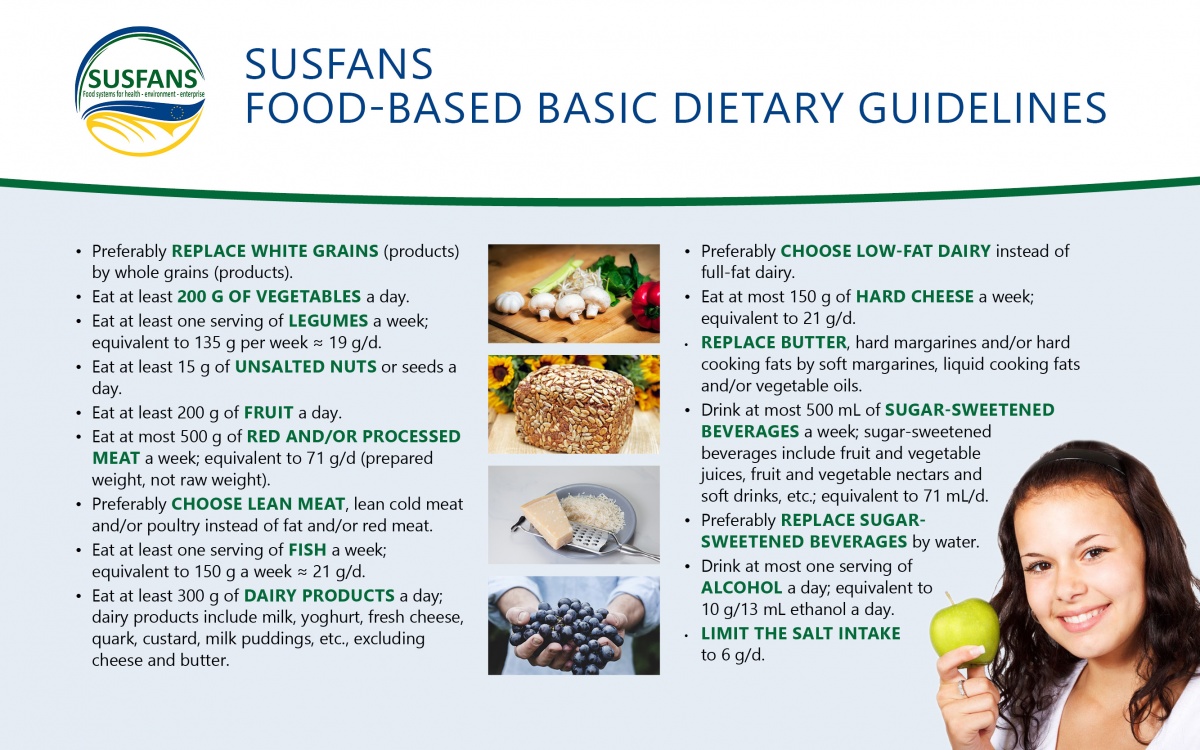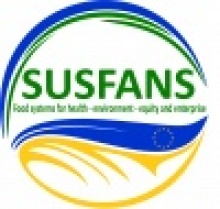Modelling healthy diets for Europe: SUSFANS food-based basic dietary guidelines
Modelling healthy diets is not an easy task. To do this, you first have to define the required consumer-based dietary intake data. This is one of the objectives of the SUSFANS project in Work package 2. In focus of this Work package are four European countries, namely Denmark, Czech Republic, Italy and France.
What kind of nutrition data are needed for a coherent modelling of Food and Nutrition Security diets? Not only do we have to look at the energy intake, but also at the adequate intake of specific nutrients, which are relevant for human health. Key nutrients have to be chosen and food groups defined, underpinned by dietary reference values.
This definition is needed in the research of SUSFANS. The outcomes will be applied to nutritional survey databases in four EU regions in WP7, which is needed for modelling of FNS diets, in particular with the SHARP (Sustainable, Healthy, Affordable, Reliable and Preferred) diets of WP7.
Healthy diets
Healthy diets are based on nutrient recommendations and food-based guidelines for some product categories, such as fruits and vegetables, red meat and fish intake. Food-based dietary guidelines can be a holistic approach. They provide advice on foods, food groups and dietary patterns to the public to inform about required nutrients, to promote overall health and prevent chronic diseases. The guidelines give an indication of what a person should be eating in terms of foods rather than nutrients.
Although those food-based dietary guidelines cover a wide range of nutrients, in specific subgroups of the population (different age, sex, socioeconomic status and anthropometric factors), some nutrients might become “of concern”. They are maybe essential/critical nutrients that are not clearly reflected in the food-based dietary guidelines.
The aim of this work is to define nutritional adequacy of diets and food consumption patterns in EU countries in two steps:
- First, include a set of food-based dietary guidelines
- Second, include a set of nutrients that are of concern in various regions of the EU.
By using this approach, the prevalence of inadequate intakes of some foods, food groups and nutrients in the European population can be investigated.
Criteria for nutritional adequacy
- Foods and nutrients that are important for the prevention of major chronic diseases,
- Foods and nutrients that are important for growth and development throughout the life cycle,
- Nutrients for which intake may become critical when shifting towards a more sustainable diet.
Food safety and allergies are not addressed, as they go beyond the scope of the SUSFANS project.
Combined Guidelines
Because food-based dietary guidelines are defined at the national level, differences exist across Europe. In SUSFANS, researchers constructed one common set of food-based dietary guidelines to enable comparison of nutritional adequacy between the four countries mentioned above: Denmark, Czech Republic, Italy and France.
They defined nutritional adequacy by setting minimum intake levels for foods that are beneficial and maximum levels for foods that are not beneficial. For most foods and nutrients, actual dietary intake levels largely deviate from recommended intake levels among European citizens. They loosened boundaries for these foods (i.e., deviation from national guidelines) to be able to examine differences in nutritional adequacy across countries.
Set of food-based dietary guidelines
The cut-off points of the food-based dietary guidelines are presented in grams per day with the aim to increase the comparability of food intake between the countries, as serving sizes are country-specific. For some foods, qualitative guidelines like 'replace with' are given.
SUSFANS FOOD-Based Basic Dietary Guidelines
|
|---|

These guidelines are part of the SUSFANS deliverable 2.2: Protocol for defining the nutritional adequacy of total diets and foods consumed in EU countries, by Elly Mertens, Anneleen Kuijsten, Marianne Geleijnse, Pieter van ’t Veer (WUR) with contributions from Ellen Trolle and Inge Tetens (DTU, Denmark), Marcela Dofková (SZU, Czech Republic), Lorenza Mistura, Laura D’Addezio, and Marika Ferrari (CRA, Italy), and Carine Dubuisson and Sandra Favret (ANSES, France).


Comments
Add new comment